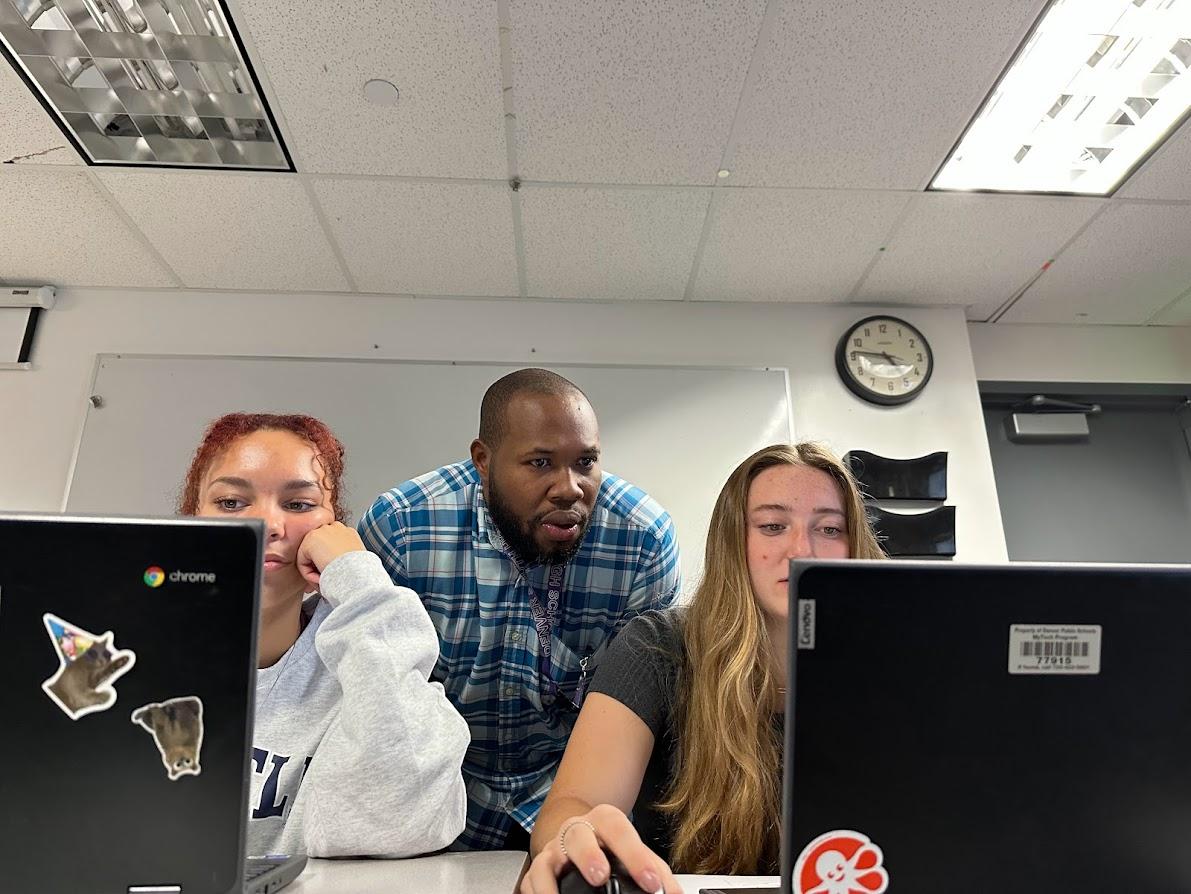
Do you work in hospitality, energy, farming, skilled trades, or finance? Or maybe in human services, public administration, engineering, media arts or in computers?
If you’re burning out at those jobs, there’s a new one for you — it may pay less but it lets you have summers off, gives you lots of creative freedom and the ability to use your expertise to stimulate young minds.
Yes, you’re needed as a teacher! Specifically, a career and technical education teacher.
Despite huge interest among students, nearly 40 percent of the state’s high school students were enrolled in at least one CTE class in 2021-22, the fact that Colorado has industries with two jobs for every one applicant, a massive state push for students to complete industry credentials while in high school – CTE teachers are in short supply.
Even when the school doors opened in Colorado last year, school districts still had to fill 15 percent of all teaching positions out of more than 55,000 teaching positions in the state, according to the state data released this summer. One in five vacancies were either nurses, mental health specialists, speech language pathologists or other specialized staff. However, fields considered “career and technical education” had among the highest shortages in both rural and urban districts.
Several national surveys, too, find that high school students are struggling to feel engaged at school and don’t feel they’re being exposed enough to career opportunities.
Why make the industry-to-classroom leap?
CPR News recently talked to four teachers in the engineering, technology and media arts cluster about why they shifted careers. We caught up with them at a training hosted by the Colorado Community College System, which oversees CTE education in K-12 and community colleges. The teachers were in the student chairs that day, learning how to incorporate Minecraft, Adobe and other hands-on technology into their classrooms, as well STEM-focused curriculum such as Project Lead the Way, Career Kickstart, NASA’s Aeronautics Research Mission or other support SkillsUSA Colorado.
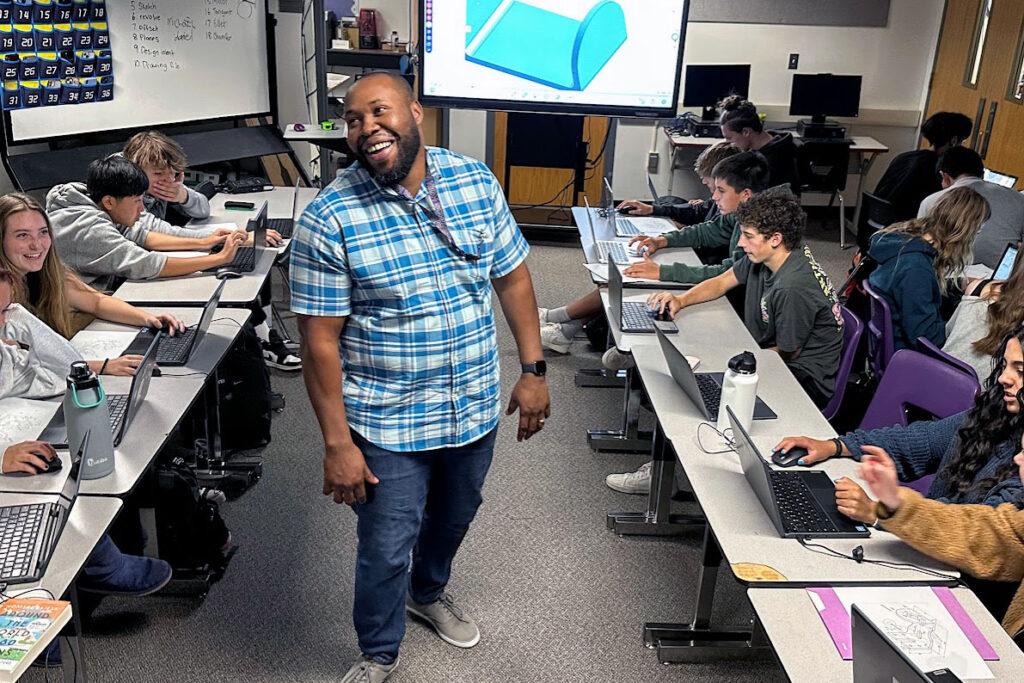
Dr. Rameesh Madourie, who teaches in Denver’s South High School, is mechanical technologist by training and is also the president of the Denver chapter of the National Society of Black Engineers. He teaches architecture, mechanical drafting and leads other teachers in the department. He attended the training to share his expertise with new CTE teachers but was also excited to learn about programs like the latest Minecraft to make engineering come to life.
“How do I utilize one of these technologies to ensure that the students see the relevance of the content we cover? Because if there's no relevance, if students can't apply the knowledge, then it's in a vacuum. Knowledge comes down to them being able to analyze and critically think and problem solve.”
Madourie said when he was in high school, he didn’t understand the reason for math and science.
“It didn't translate into money. I didn’t see how the content applied to my economic situation. And coming from a family that wasn't wealthy, at the end of the day, I needed to see how the content made sense.”
It wasn’t until he enrolled in an electrical engineering class and began wiring circuits that things clicked. Madourie notices several places in the current education system where kids aren’t able to relate to what they’re learning and how it will help them eventually integrate into society.
“CTE truly prepares you to integrate. Our CTE programs really foster that (perspective) where there's never a right answer but multiple answers.”
Last year his students partnered with engineers at the South Platte wastewater treatment facility to work on a problem redesigning sections of the facility. While developing technical skills was important, Madourie said it was learning communication, presentation and resilience skills that proved most powerful for the students.
“What we are actually doing is moving the content we cover outside of the four walls,” he said. “It's no longer for a class, it's bigger than a grade…. it's no longer just laborious work. It's fun, it's exciting, but we see how this fun and excitement translates into the real-world setting.”
His elevator pitch to encourage more industry folks to become CTE teachers is this: Engineers make more money but they have no time. As a CTE teacher, Madourie said he has flexibility, more time off, and the creative freedom to still dabble in the engineering world and continue problem solving. Getting more education, such as a PhD, also increases one’s earning potential as a teacher, he said.
One challenge Madourie and other CTE teachers see is if an educator who is passionate about a program leaves, a CTE program could end or see a lull until another teacher is hired. He’d like to see a pathway pipeline for CTE teachers and more training events where teachers can network to make sure they’re equipped with the latest technology or updates from industry.
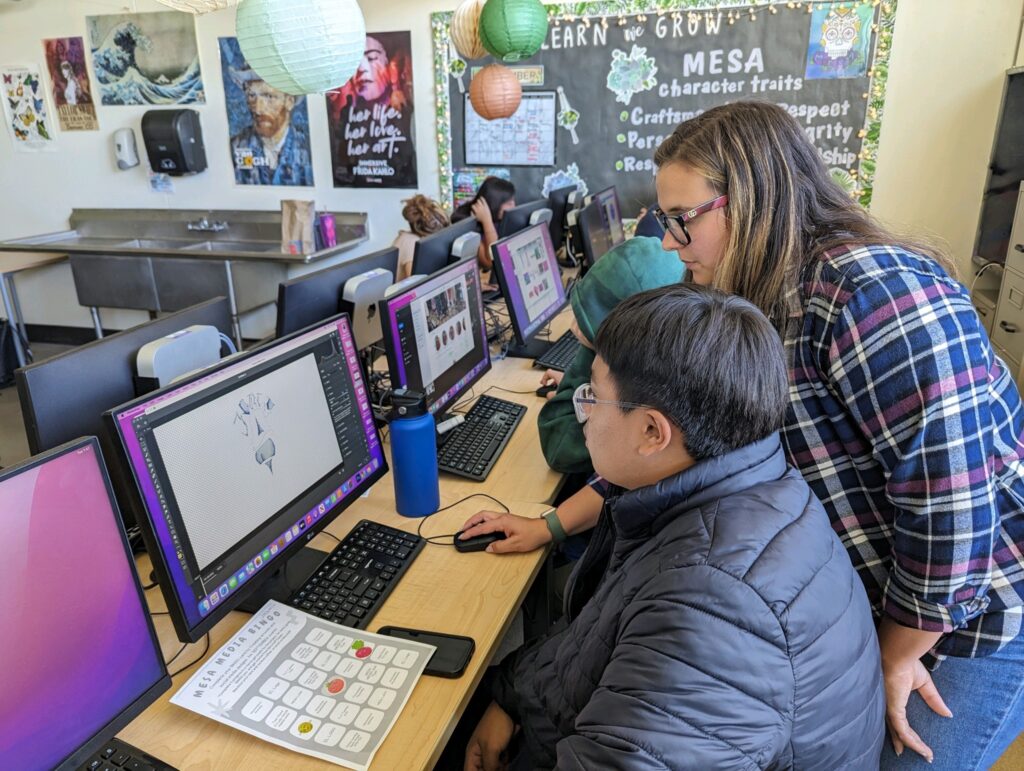
Natalie Huff, 28, teaches media arts and technology in grade nine to 12 at the Mapleton Expeditionary School of the Arts. She has degrees in business marketing and international business, printmaking and graphic design, and education. What’s allowed her to bring real skills to her classroom is the fact that she has side gigs. She also owns her own illustration business, runs art shows and runs the marketing and social media for a family-run pastry shop.
Huff saw her father work in the same industry with two job changes in 35 years; same with her mother. She sees her generation and her younger students wanting something else.
“That's not why you choose your post-secondary,” she said. “People aren't sticking 35, 40 years in the same industry because they're not settling on that one choice. CTE offers kids an ability to not necessarily strike things out early on, but to try them to decide if they like it.”
There is a national ‘expeditionary learning’ summit coming to Denver later this year. Huff reached out to the organization’s marketing team to have her students work with them to recreate their logo, create a brand portfolio, formulate designs, make a proposal and get feedback. Right now they’re working on digital campaigns to promote homecoming celebrations.
Huff said CTE classes animate students by letting them discover what they do and don’t want to do as a career, and give you skills to move from one career to the next. She said many employers are also looking for critical thinking, problem-solving and people who know how to work on a team.
“Whatever students learn in class can go right on their resumes,” she said. “They not only study art from an artistic point of view, but also how to apply their work to build marketing campaigns that can drive attention to businesses.”
Huff’s not given a full curriculum but is encouraged to bring her own experiences into the classroom to spark students’ interest. She can design projects, bring in guest speakers, send students out to solve a problem for a community member for a math credit. She finally has paid time off, something she didn’t have in marketing, and will be able to spend more time with her child in the summer.
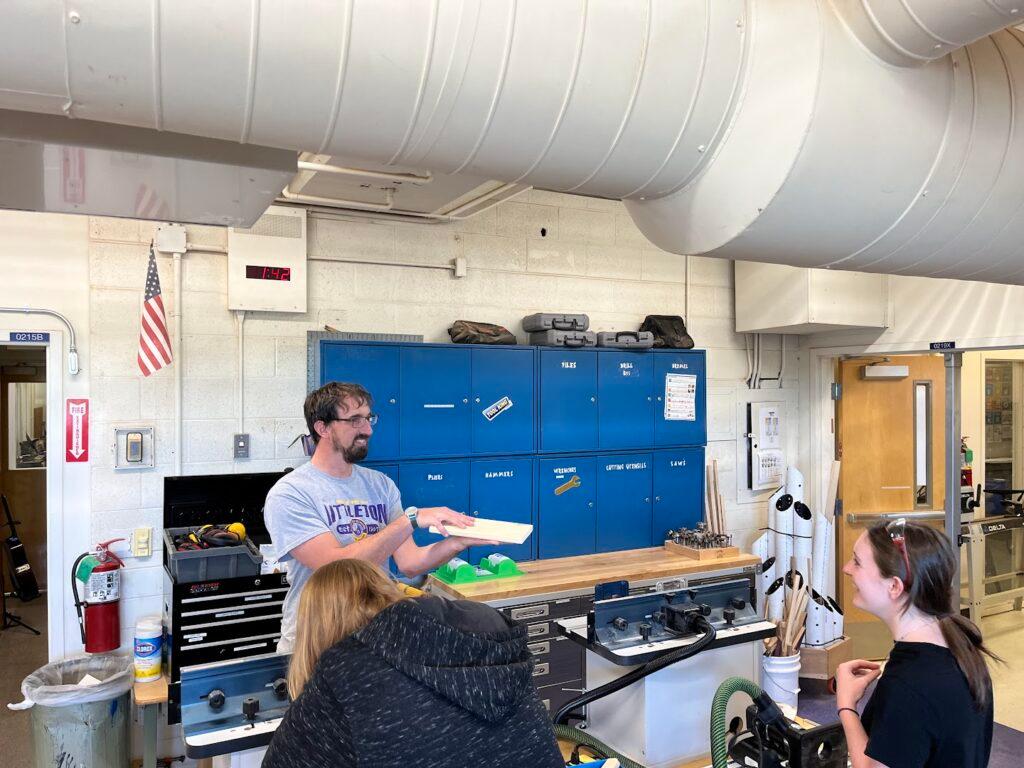
Sean Rastsmith, 38, is a STEM and engineering teacher at Littleton High School, which also includes woodworking and 3D CAD (computer aided design) where students can earn industry certifications. The Georgia Tech graduate worked as an engineer and as part of an IT team for engineers at a large company. While his wife was doing a Fulbright in Eastern Europe, he thought, “What do I really want to do with my career?” He remembered how much he enjoyed working with kids at summer camps when he was younger. So he took up substitute teaching in Croatia. In Colorado, Rastsmith got an alternative teaching license, as he was being paid to teach.
He tells an old joke to explain why he left engineering for teaching: “Students admit sometimes when they don’t know something, engineers don’t.” Here’s the real reason. One of his teacher friends used to print out lightbulbs on index cards and hold it over a student's head when they got something.
“It was a, ‘Hey I'm acknowledging this really hard thing all of a sudden it snapped and it clicked in your brain and you've got it.’ And that ‘wonder and wow’ is awesome to see. And that ‘wow’ is so much more evident in our students because they haven't been told no.”
Kids, he said, keep trying and failing. Rastsmith loves acknowledging their good work and then asking: “How are you going to make it more awesome?”
In his day, engineers and machinists were in separate worlds. He’s seeing kids now want to get their hands dirty, not just draw and design. In his 10 years teaching, Rastsmith’s been heartened to see critical thinking and problem-solving entering more traditional subjects – like math, social studies and science.
Rastsmith said it’s important for CTE teachers to know what’s happening in industry because kids pick up on whether you're faking it. He’d like to see a model where industry people close to retirement can teach a class or two. He said not everyone is cut out to work with kids but entering a CTE class and “Saying, I walk those shoes, I live that life you're going to, is really powerful for kids to see.”
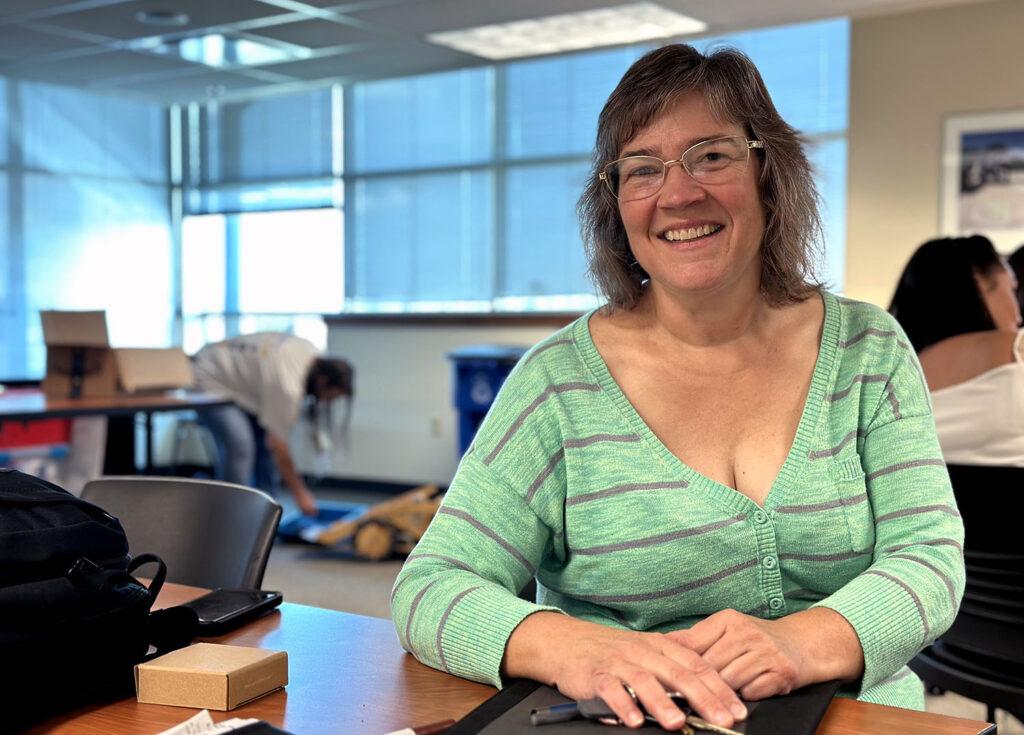
Jen Reilly, 57, is a multimedia art teacher at Trinidad High School in southern Colorado. She worked in schools for a while, taught music, technology education, also tried graphic design and worked as a photographer, but finally needed something stable. So she became a truck driver. Reilly found herself gravitating toward teaching other drivers when they had problems on the road.
“I love teaching,” she said. “I'm a natural teacher. Teaching is just a part of my genome.”
So, Reilly was thrilled when she got the job to teach multimedia arts this year. She’s been amazed at the amount of creative freedom she has. Over four years in her classes, students can exit with a college certificate in graphic design with employable skills like Photoshop and Illustrator certifications. She has a couple of students who want to be tattoo artists so they’ll work on developing portfolios in Illustrator.
Reilly said she sees many students who know they can’t afford college but they also don’t know how to learn.
“In today's society, we need to be teaching kids how to learn,” she said. “That’s what CTE classes do.”
Reilly sees some classrooms that are still using a ‘regurgitation’ method of instruction focused on memorizing facts “where kids get the love of learning drilled out of them.”
“And that just kills me,” she said. “It’s painful.”
Why does she think CTE teaching is important? She said you can change lives and give back. When she was young, Reilly almost quit high school. She hated it. Band was the only thing that kept her there. For her, teaching in a CTE classroom is a dream.
“For me, it's a way of giving back. You've reached a point, you want to give back. You want to see the world be a better place. And here I am at 57 years old, a teacher teaching what I love, which is the arts.”








